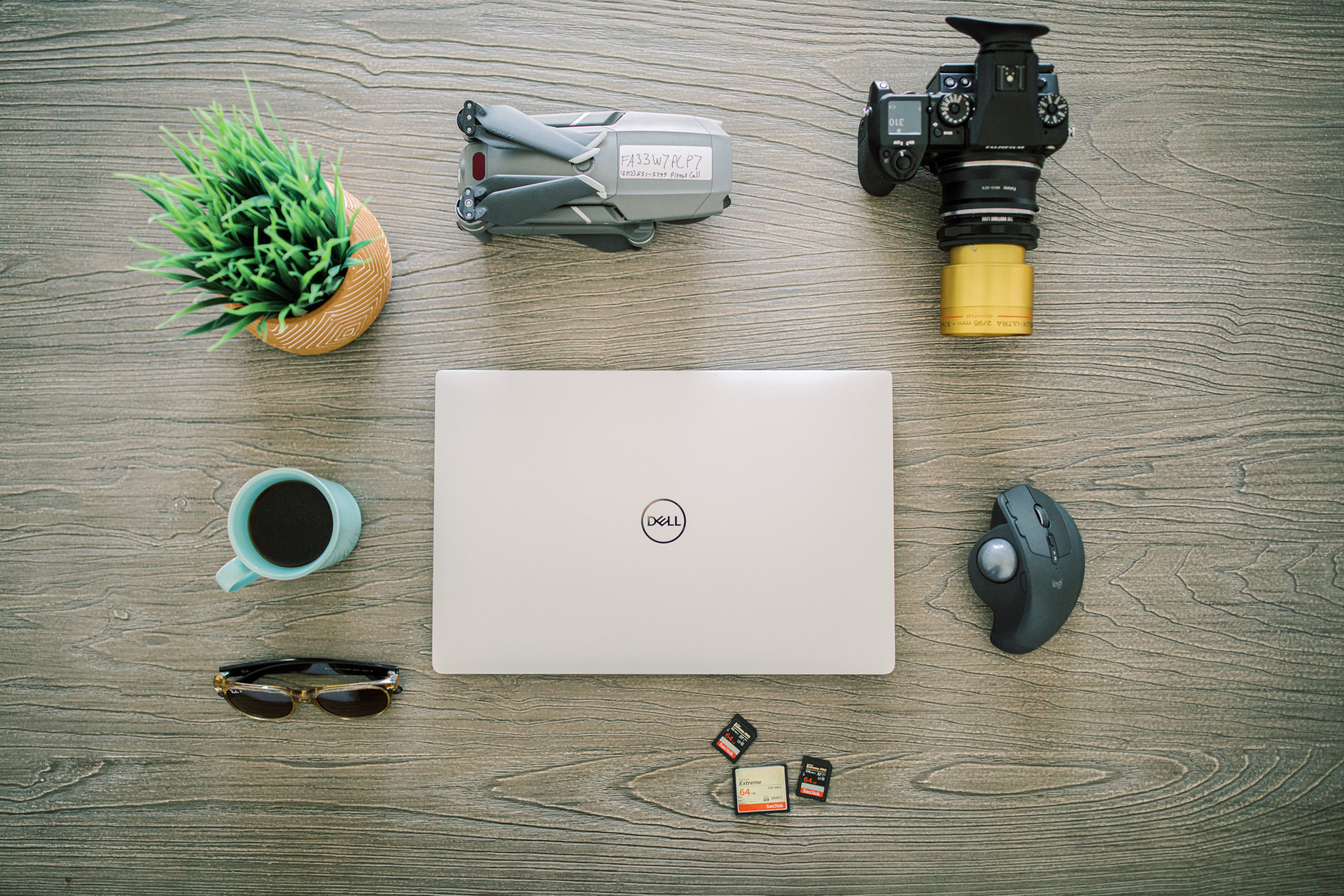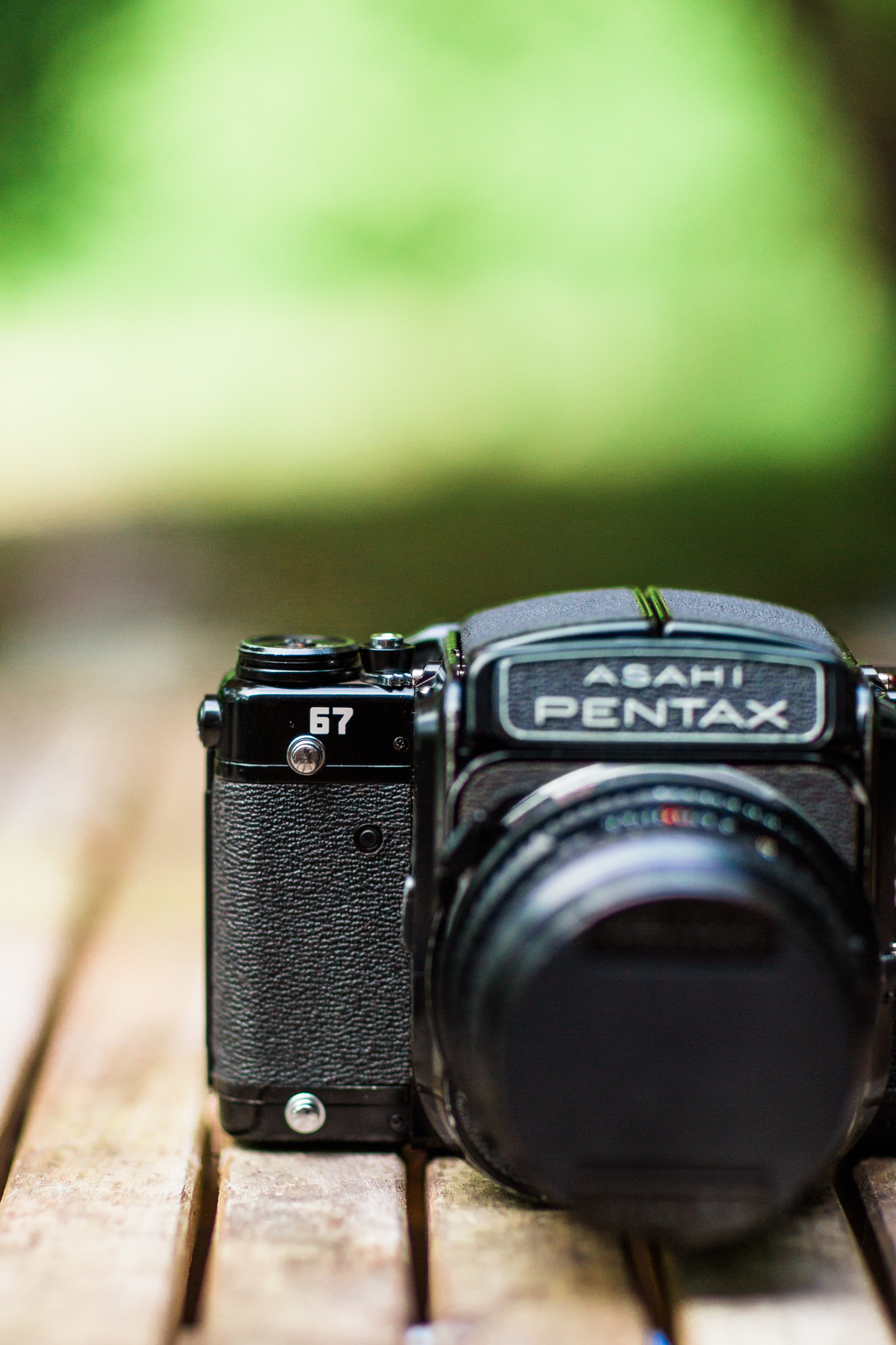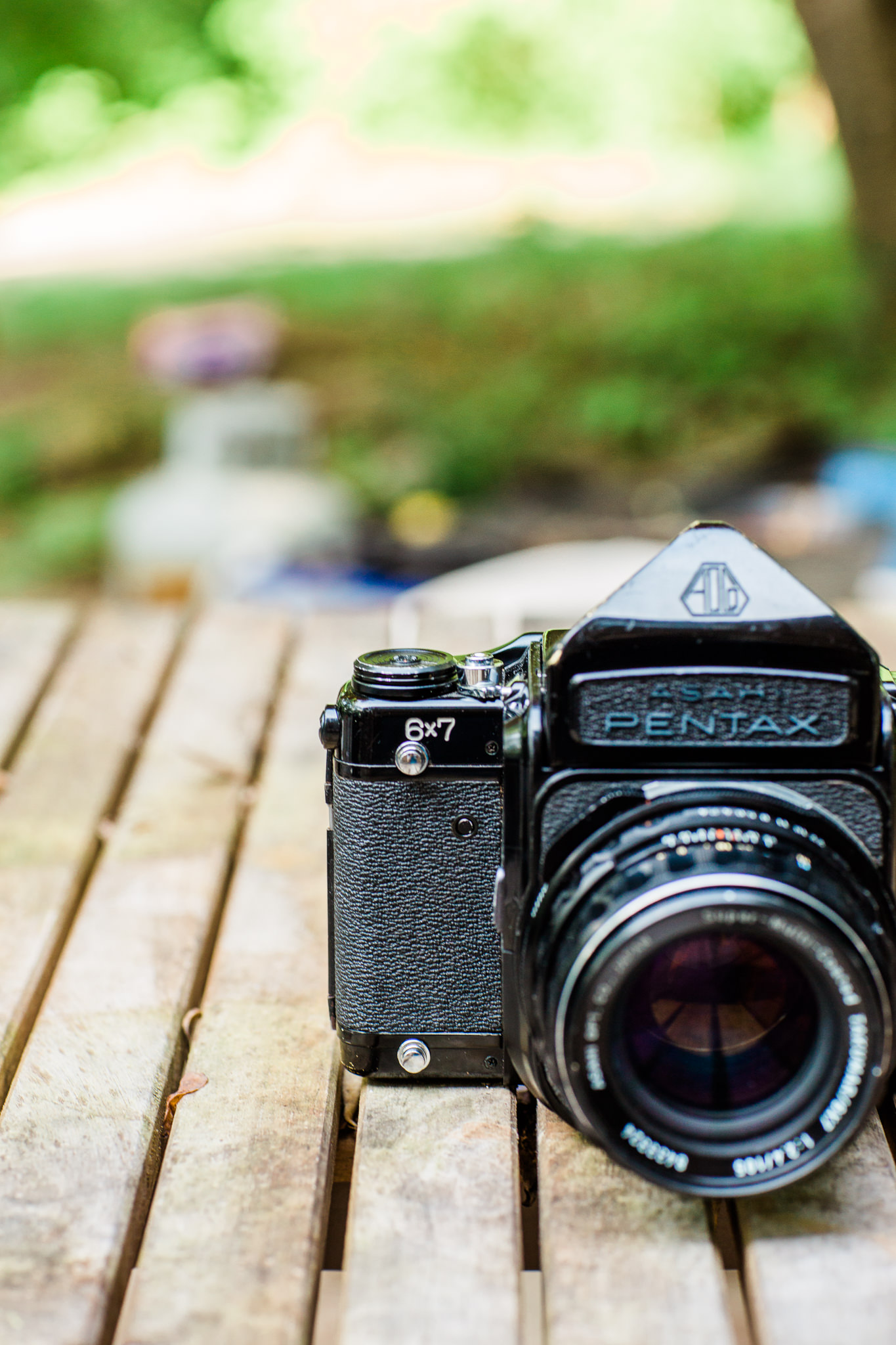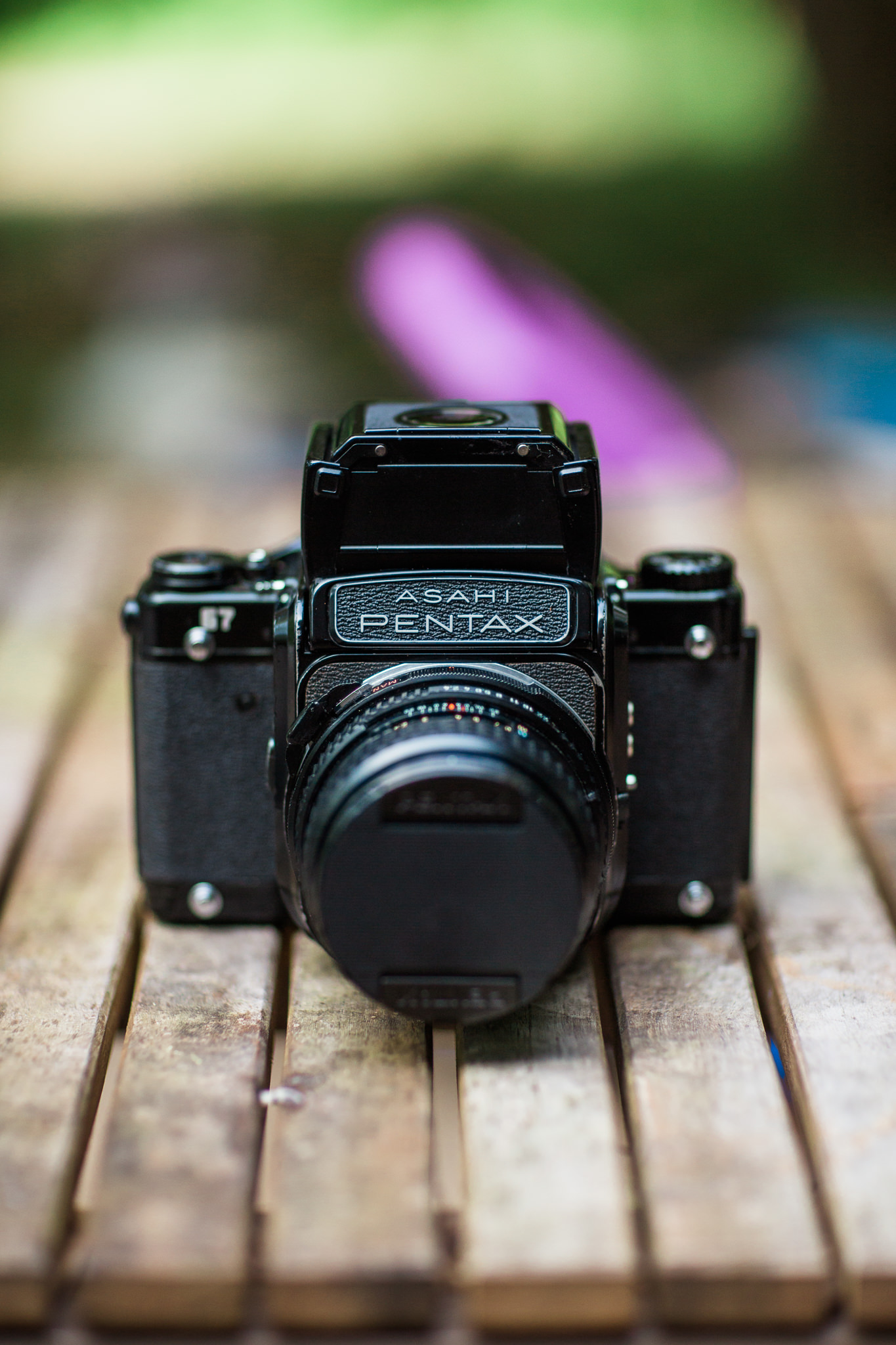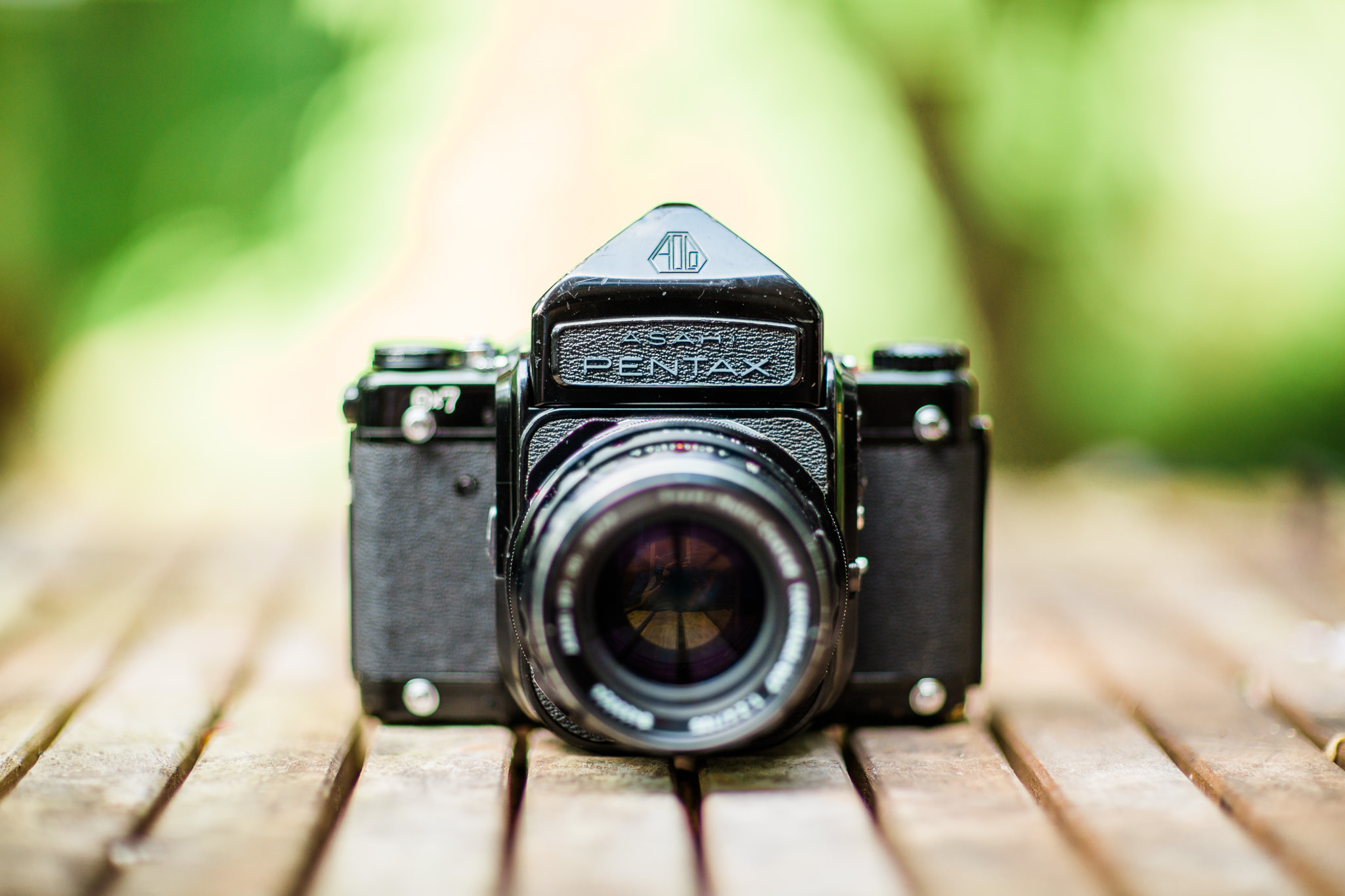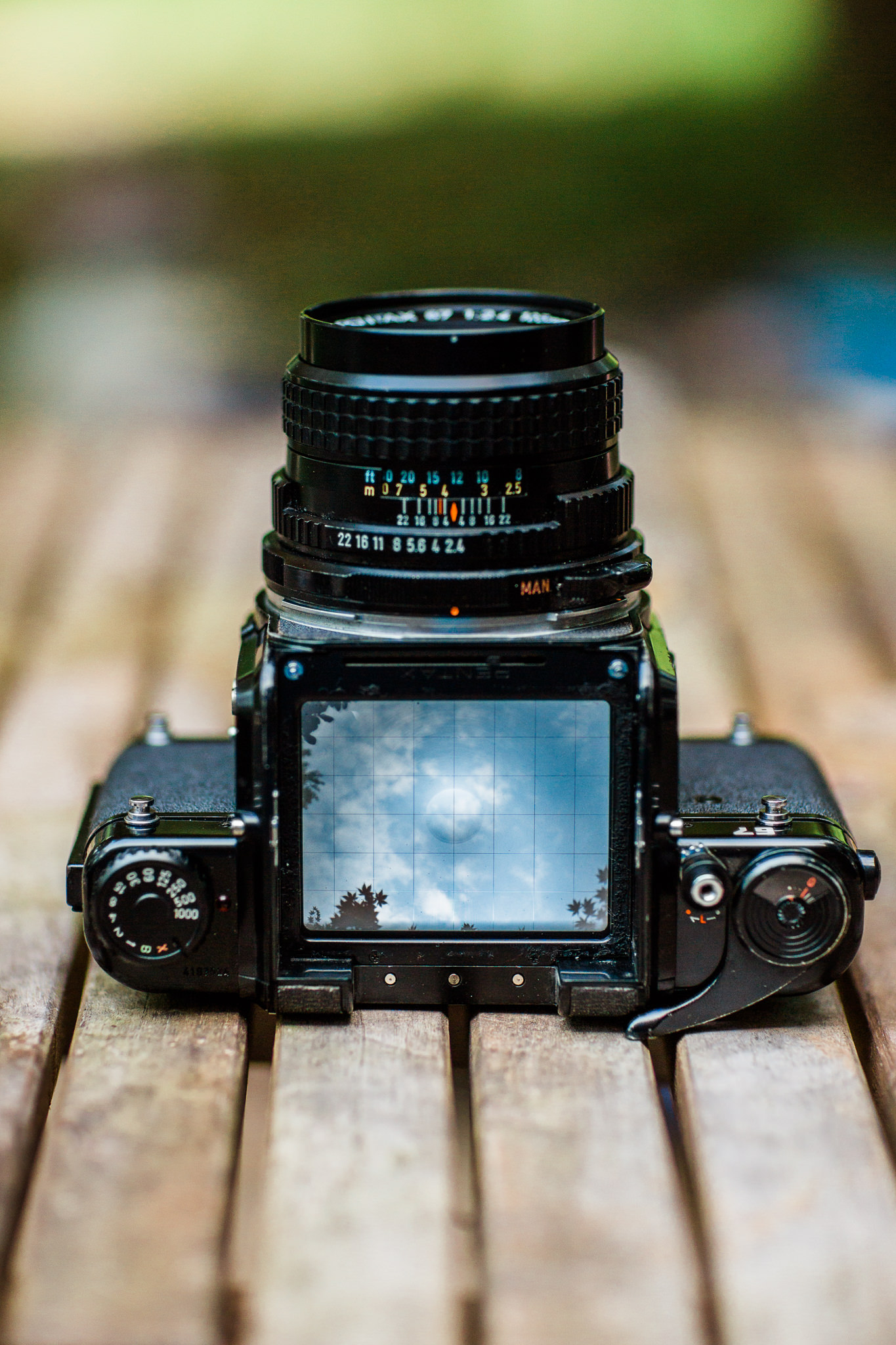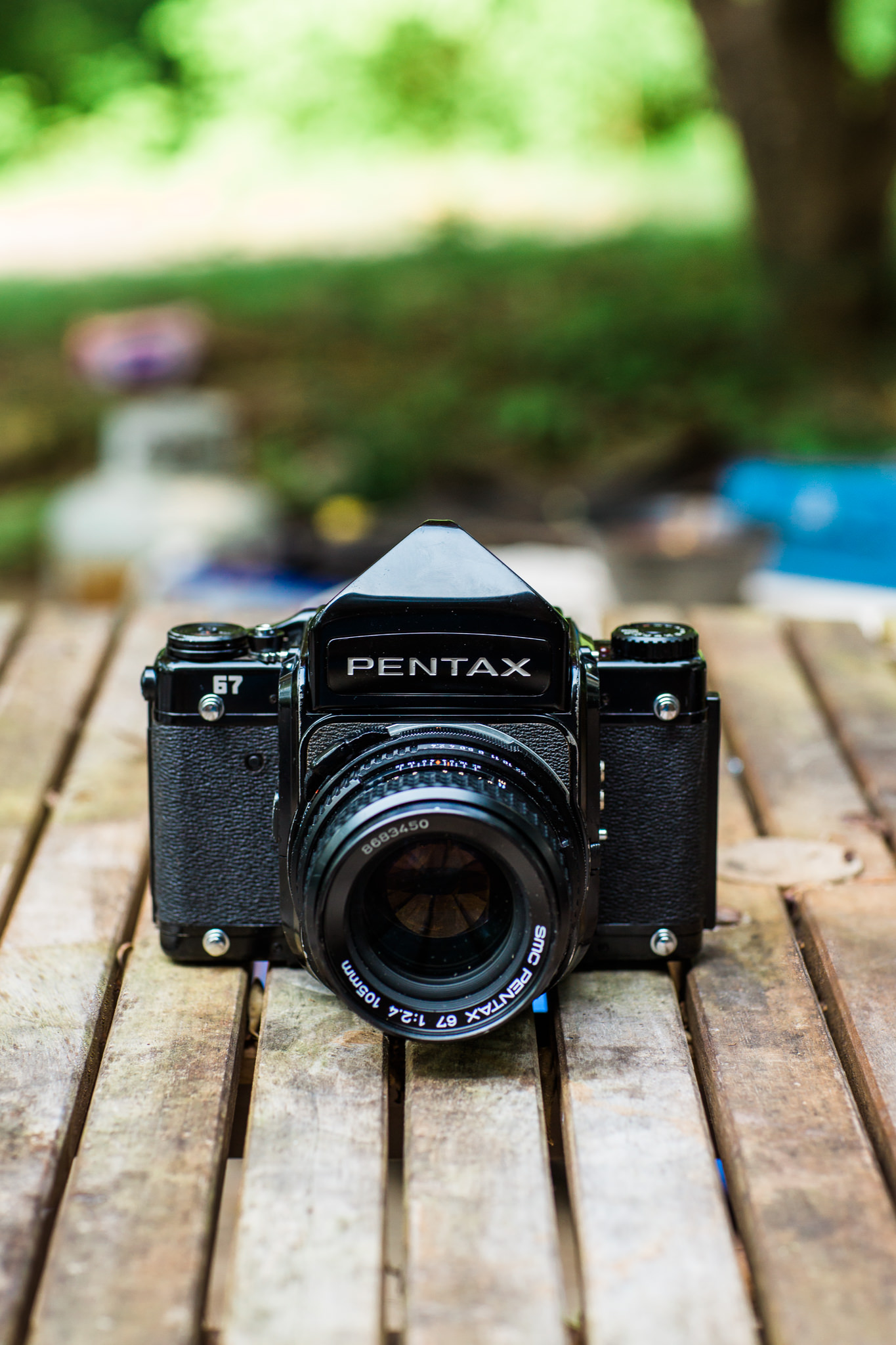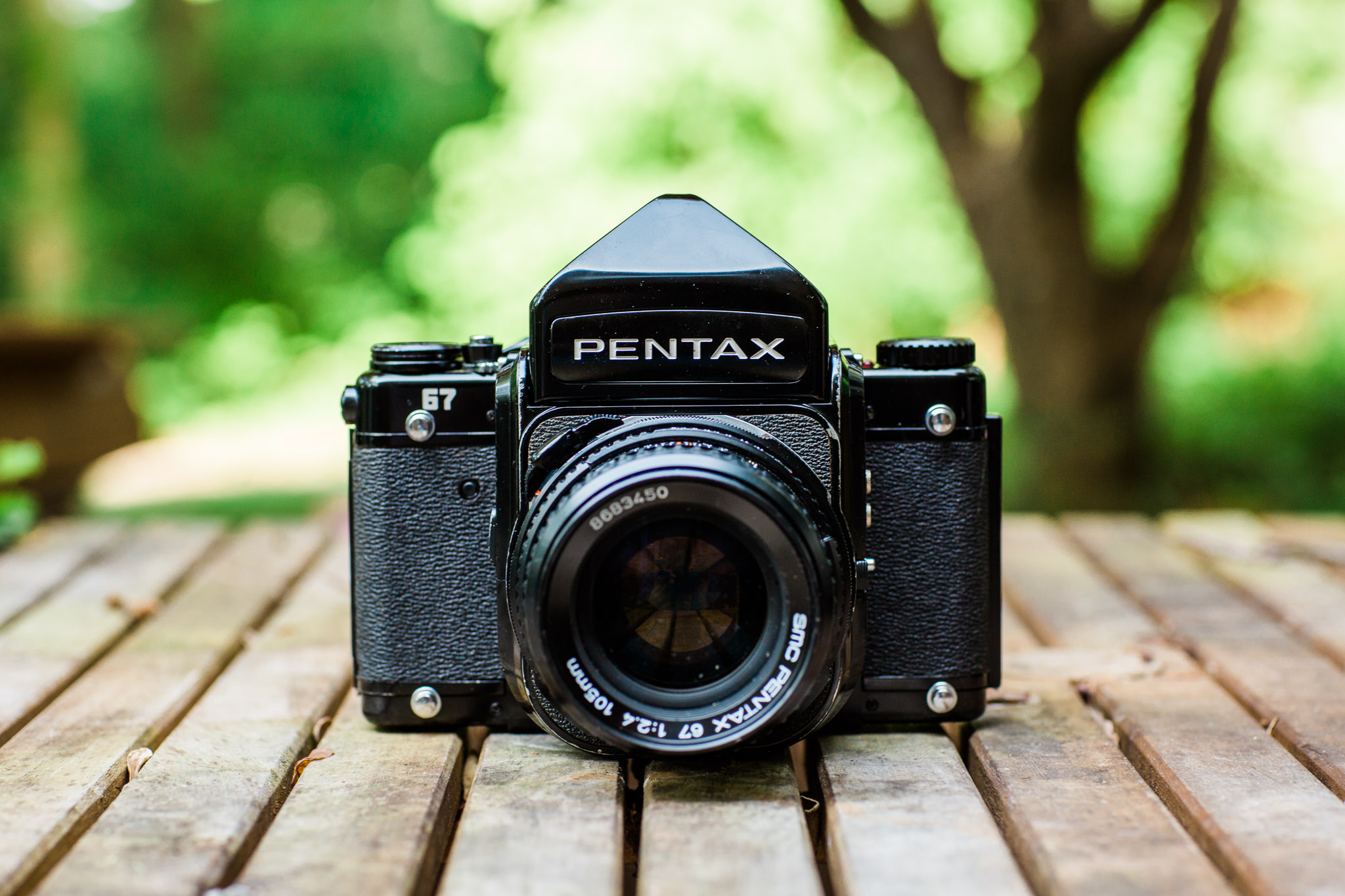A Buying Guide: How to Tell the Different Pentax 105mm 6x7 Lens Versions Apart
Note: This post is part of our "Learn Blog" for photographers. For workshops, coaching, and other resources designed to help grow your skills as a photographer click here (after you read the article, of course)!
Pentax 67 Medium Format Film Camera with the Pentax 67 SMC 105mm f/2.4 Lens
If you’ve read our Pentax 67 Review, you know we love Pentax 67. The 105mm f/2.4 is a huge part of that legacy.
And if you’ve found this article, you've probably been convinced that its a great lens, but once you started searching Ebay, you noticed that there's obviously more than one version of the legendary Pentax 67 105mm f/2.4 for your Pentax 645 or Pentax 6x7 system. Not only that, but there's obviously a large difference in price, but does it really matter?
Well, in short...
Yes, it does matter.
What's in this article:
What's the same between the different Pentax 105mm versions?
What's the difference and why does it matter?
Are the differences between the different Pentax 105mm lenses worth the cost?
Pentax 105mm f/2.4 Super Takumar vs Super Multi Coated vs SMC Pentax
What's the same?
All three versions of the Pentax 105mm f/2.4 are exactly the same as far as internal design. That is, the design, not necessarily the glass, is the same.
What's the difference?
Let's start with a what's what:
In order from earliest (and least expensive usually) to newest (and usually most expensive):
Super Takumar (Introduced in 1969)
Super Multi Coated Takumar (introduced in 1971)
SMC Pentax (Introduced in 1989)
In my research I have found that there are at least two different “versions” of the SMC Pentax 105mm. An earlier serial number version has a strong purple/red coating cast on the lens, while a newer serial numbers appear to have a stronger green/yellow cast.
Super Multi Coated Takumar Pentax 6x7 105mm f/2.4 Lens
The original Super Takumar is easily recognized by the words "Super Takumar" on the front, while the words "Super-Multi-Coated Takumar" indicate the next version introduced in 1971. Both of these versions have a metal focus ring.
The newest version is typically quite a bit more expensive and can easily be recognized by "SMC Pentax" on the front and by the rubberization on the focus ring, vs the metal of the older versions. This latest version is also slightly lighter than the older versions.
SMC Pentax 67 105mm f/2.4 Lens
It is rumored that each version featured an updated coating that provided better micro-contrast and sun-flare control. This means in theory that each successive version will have a subtle increase (if noticeable) "3d" effect compared the one prior, and better contrast and light control.
Worth noting is that the SMC does appear to have at least two versions in terms of it’s coating. The earlier has a purple/red coating on the glass (which can be seen when light is reflected while looking at the front element), while the newer serial number version has a yellow/green reflection.
The coating difference was probably due to manufacturing regulation changes. Though I have obtained a copy of each version, I do not know as of yet whether there are any noticeably differences in the image produced by the two different versions. When I conclude my tests, I will update here.
Issues with Older Versions and Radioactivity
The older lenses are more prone to balsam separation, fungus, and yellowing. Yellowing, in particular, is an issue that the two older versions encounter due to the radioactive material (sounds scary, but it's not that unhealthy) due to the use of thorium glass elements. Some argue that the 2nd version does not yellow. Please see the below section for more info on that.
Thorium glass was cheaper and was thus a popular choice. If and when it yellows due to the radioactivity, it can cause the color transmission to be less neutral and, well...yellow. The SMC Pentax version did not use thorium glass, but instead a high-index non-radioactive glass, which, again, in theory, should mean an improved image and no yellowing.
Another point to the SMC Pentax.
With that said, yellowing can be cured by placing the lens in direct sunlight with tinfoil under the rear element. Also, UV lights have been reported to also clear yellowing.
Does the 2nd Version Super Multi Coated Takumar Yellow?
I've heard many intelligent photographers assert that the 2nd version, the Super Multi Coated Takumar, does not yellow. However, I heartily disagree with this. I have seen multiple examples of yellowed 2nd versions. However, they are not always yellowed.
Here's a video showing that the 2nd version can indeed be radioactive.
Is It Possible for the SMC Pentax 105mm to Yellow?
Some people report seeing yellowing on the SMC version, but this is only a property of the lens coating reflecting certain light. A true "yellowed" lens will show a yellow color, no matter which light is reflecting off of it. The SMC, if yellow in certain light, will reflect various colors when the elements are pointed at different angles/directions. But will appear clear and neutral when placed against a neutral background without light reflecting the coating.
Is the SMC Pentax worth the extra cost?
This question is a little like the question of “which version Pentax 67 should I buy?” You’re going to get a lot of value out of any version, both of the Pentax 67 cameras and the Pentax 67 105mm versions.
So, is the SMC Pentax worth it? If you shoot backlit quite a bit, having the extra contrast and flare control is highly desirable. That, coupled with non-radioactive non-yellowing glass, and a higher chance of avoiding the degradation (balsam separation, fungus) of older lenses may just be enough to warrant the upcharge.
Keep in mind though, a well cared for, yet older version lens that's been stored and used properly may be in much better shape than a newer lens that has been abused. Always check the description of the lens you're buying thoroughly to ensure spending more than you should or getting a lemon.
Now, head over to Ebay and start trying to identify them! And if you would...
Click here to use our affiliate link, since Ebay will give us a portion of profit when you make a purchase!
Thanks in advance!
If this article has been helpful, please be sure to like below and share! Thank you!














